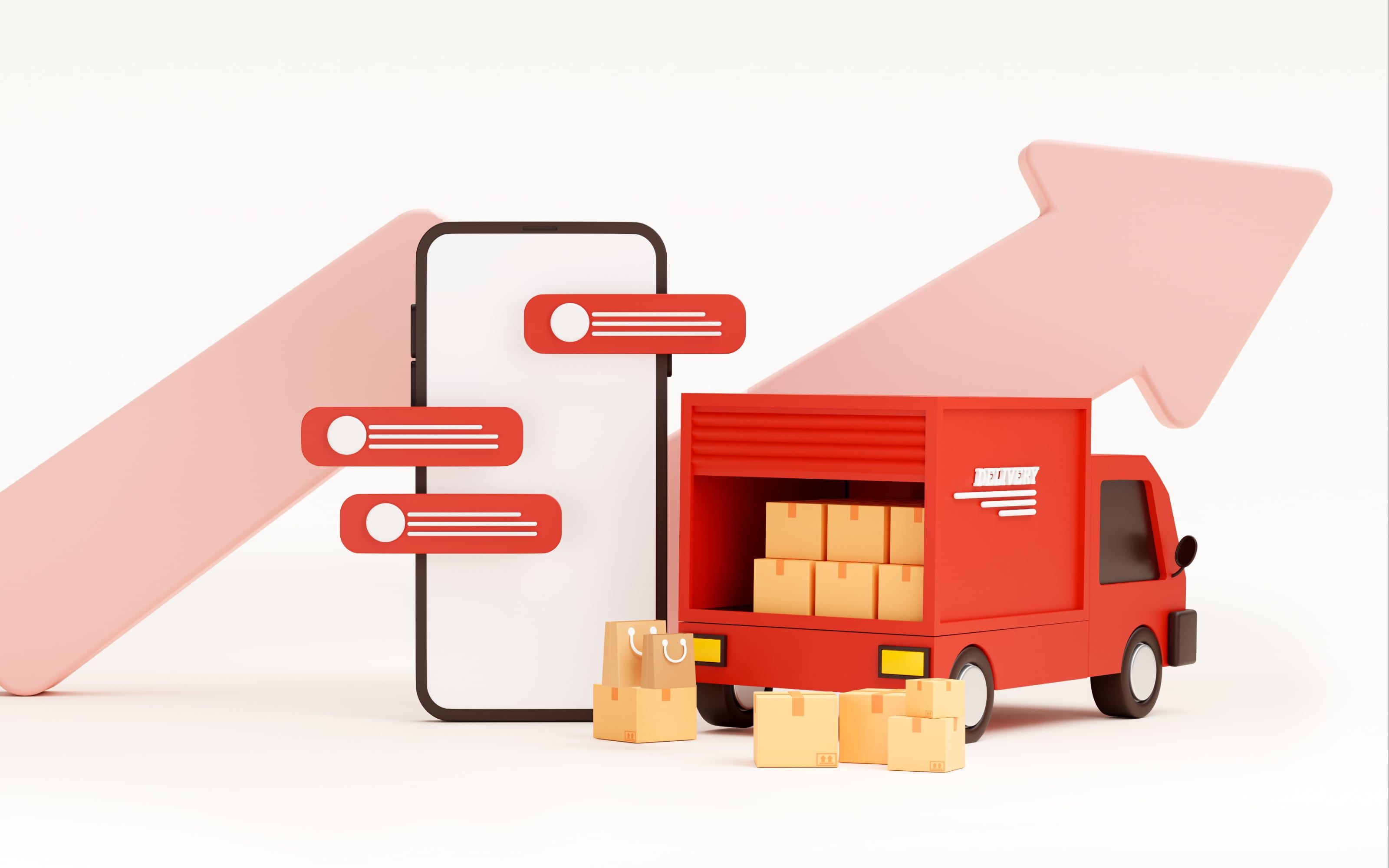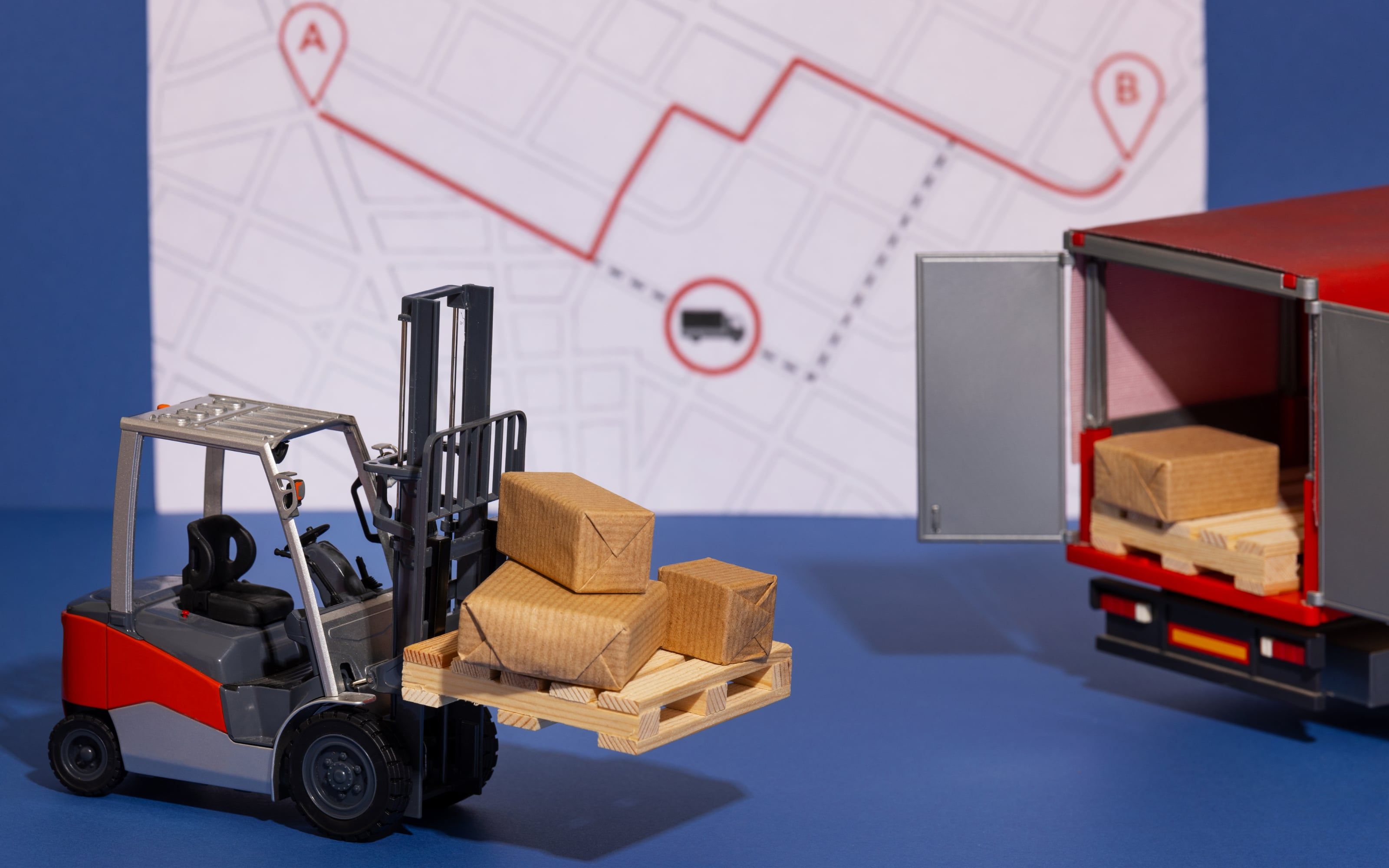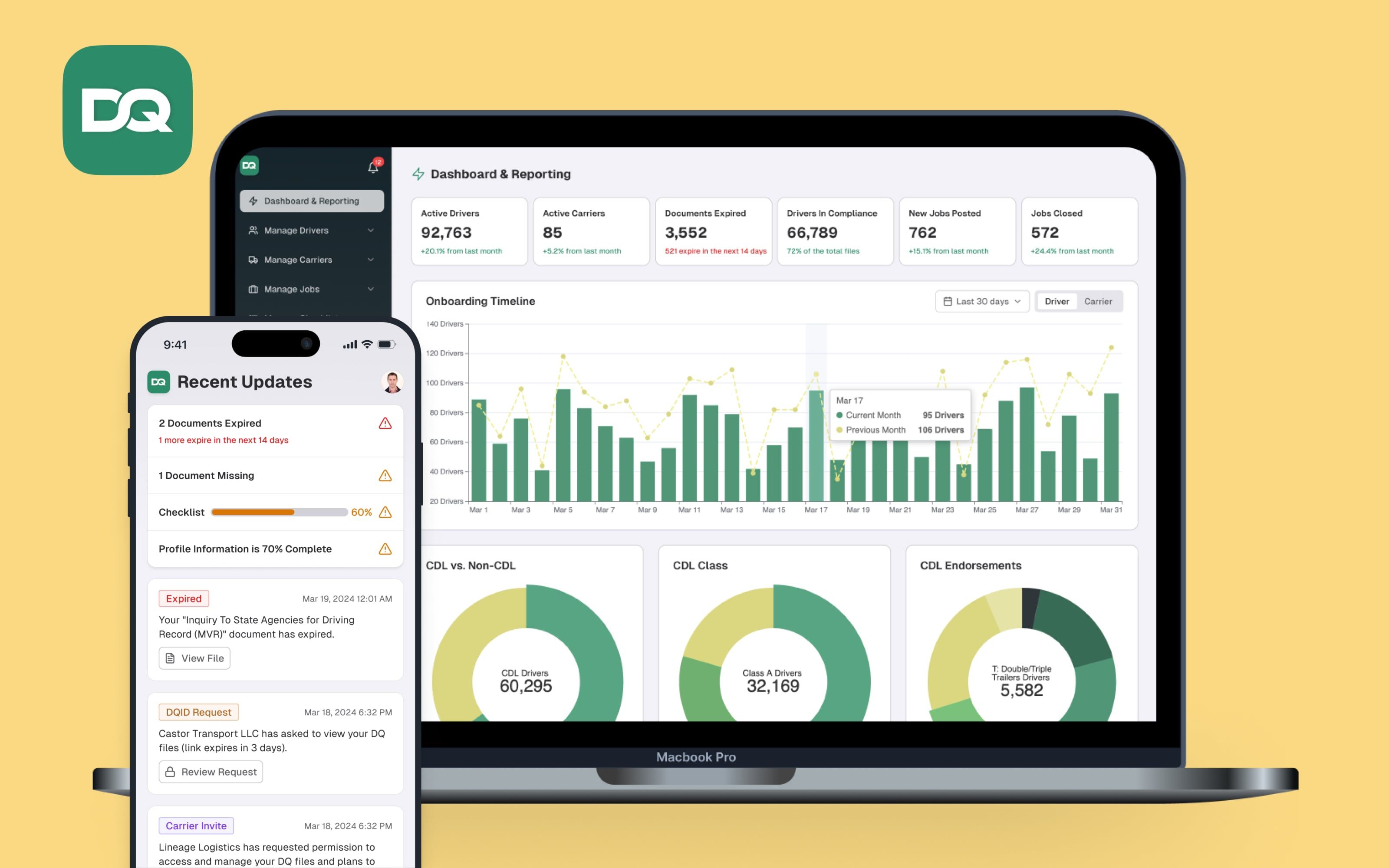Like every other industry, the transportation and logistics sector has undergone a significant transformation by focusing its shift towards mobile app technology. The manual management of overall logistics operations, including fleet management, supply chain coordination, inventory tracking, and driver scheduling, can be time-consuming, error-prone, and inefficient.
However, mobile technology and digital solutions have emerged as a game-changer in the transportation sector. The transportation and logistics mobile apps can streamline logistics operations, including trucker compliance and driver management more effectively and efficiently than ever before. According to the study, the digital logistics market is projected to reach $46.09 billion by 2028, growing at a CAGR of 17.1%.
DHL, GIGGO, and Uber Freight are the leading logistics and transportation service companies that embrace the power of modern app solutions to digitize their logistics operations and unlock new potential for elevated business success.
Now, let’s explore how the transportation and logistics mobile app plays a key role in enhancing operational efficiency, improving driver safety, and ensuring regulatory compliance within the industry. We'll also discover the transformative impact of real-time tracking, optimized route planning, and data-driven insights, which help logistics companies meet customer expectations, reduce costs, and streamline fleet management.
Why Develop Transportation And Logistics Mobile Apps

Below, we’ve outlined the reasons for developing a transport and logistics app that will help you better understand why more and more companies are investing in mobile apps to overcome the key challenges of traditional logistics and transportation.
Improved Operational Efficiency
A transport and logistics app boosts your operational efficiency by automating manual tasks, minimizing delays, and providing seamless communication across teams. You can track real-time data, coordinate schedules, and manage resources with ease, all from a single platform. With logistics app development, you can cut down operational bottlenecks, enhance workflow visibility, and enable faster decision-making. It will help your organization deliver better services and meet customer expectations consistently.
Discover: Workflow Automation Best Practices for Improved Efficiency
Optimized Route Planning
Mobile apps enable optimized route planning, minimizing travel time and fuel consumption while enhancing delivery precision. Real-time traffic updates, GPS navigation, and AI-driven predictive analytics help drivers avoid congested routes, accidents, and road closures. These capabilities reduce operational costs and improve driver productivity as well as customer satisfaction. Additionally, the ability to adjust routes on the fly supports faster delivery, making logistics operations more streamlined, cost-effective, and reliable in meeting service expectations.
Enhanced Customer Satisfaction
Customer satisfaction is the top priority as it fosters loyalty and drives repeat business. However, transportation and logistics mobile apps empower you to improve customer satisfaction by helping them track their deliveries, receive estimated arrival times, and communicate directly with the support team. It makes the process more convenient and predictable. Coupled with efficient inquiry handling, you can offer more responsive and transparent customer service.
Virtual Training And Coaching
With transport logistics apps, you can offer virtual training and coaching for your drivers and logistics staff, so they’re always up-to-date with industry practices and safety standards. Virtual training modules allow employees to learn at their own pace, access materials anytime, and stay informed on important procedures. Virtual training promotes consistency across your teams and prepares them for real-world challenges.
Increased Driver Productivity
Keeping your staff productive, including drivers, is equally important as managing your overall operations. The best way to increase their productivity is to automate administrative tasks, which enables them to focus more on their core tasks. For instance, drivers can log hours, report issues, and access route details directly from the app, which reduces paperwork and minimizes time spent on manual processes. Moreover, you can also offer badges, rewards, and certificates for their achievements, which helps them stay productive and enjoy their work.
Better Resource Allocation
With mobile apps, you can allocate resources more effectively, ensuring vehicles, drivers, and equipment are used optimally. Real-time insights help you avoid overuse or underuse of assets, enhancing productivity and minimizing waste. enables you to get the most from your fleet, reduce costs, and respond swiftly to fluctuating demands, making your logistics operation more agile and efficient.
Paperless Documentation
Manually managing documentation is a time-consuming process. However, with a mobile app seamlessly managing overall documents, including data forms, receipts, and signatures, you can streamline workflows, reduce errors, and ensure quick, organized access to records anytime, anywhere. Further, you can also manage and access files over the cloud for secure and convenient storage.
Automated Compliance Management
Compliance management in logistics involves ensuring that all operations meet regulatory standards and industry requirements, like hours of service (HOS) and safety protocols. A transport logistics app, enables automated monitoring and logging of compliance-related data, alerting drivers and managers about potential violations. This helps reduce the risk of penalties and maintain safety by keeping the fleet aligned with legal industry standards.
Cost-Effective Fleet Management
Fleet management becomes more cost-effective with mobile apps that provide real-time tracking, predictive maintenance alerts, and fuel usage monitoring. By keeping an eye on vehicle performance and maintenance needs, you can reduce unnecessary expenses and prevent costly breakdowns. This cost-efficiency ensures that your fleet remains reliable, extends asset life, and contributes to a more financially sustainable operation.
Seamless Driver Management
Managing drivers through transport and logistics apps is more simplified and easier than manual management. From managing their data to managing their schedules and monitoring their behavior, all can be done with the help of a transport logistics management app. It helps you to streamline communication, ensuring that drivers receive timely updates and instructions. Additionally, the app allows you to track driver performance and provide targeted training and support.
Core Mobile Functionality of Transport And Logistics App Development

Let’s explore the core functionality of transport and logistics app development, which plays a vital role in optimizing fleet management, enhancing route planning, and ensuring regulatory compliance. These functionalities enable seamless communication, real-time tracking, and efficient resource allocation, making logistics operations more streamlined and effective.
1. User Authentication
User authentication is a critical feature for transport and logistics apps. It helps prevent unauthorized access, improve user security, and ensure compliance with industry regulations. Implementing robust authentication processes, such as multi-factor authentication and biometric login options helps you verify the identity of drivers, dispatchers, and customers before granting access to the app. Additionally, user authentication simplifies the management of user roles and permissions, allowing you to customize access levels based on specific functions.
2. Real-Time GPS Tracking
Real-time location tracking has revolutionized logistics and delivery, making the entire process more efficient. GPS enables users to monitor vehicle locations and movements instantaneously, allowing for optimized delivery schedules and timely adjustments based on weather or traffic conditions. This technology also helps drivers avoid high-risk areas and reduces travel through accident-prone zones. Further, AI-driven route suggestions improve the efficiency and security of your logistics operations. This enables you to better manage logistics tasks while optimizing your service offerings. Customers benefit from real-time order tracking, allowing them to stay informed about the status of their deliveries. This increased visibility improves customer satisfaction and strengthens the overall reliability of your service
3. Real-Time Data Analytics
Using real-time data analytics, such as AI-driven analytics, will help you make informed decisions and gain actionable insights about how efficiently your fleet operates, the performance of individual drivers, and trends in delivery times. This data-driven approach leads to proactive maintenance, optimized routes, and improved resource allocation. Moreover, you can also track key performance indicators, identify trends, and spot inefficiencies in real time. For example, UPS utilizes AI-powered data analytics to analyze vast amounts of route and traffic data in real-time.
4. Geofencing
Geofencing is a powerful feature that uses GPS technology to create virtual boundaries around specific locations. When a vehicle enters or exits these predefined zones, the app triggers alerts or actions, enhancing operational efficiency. It allows for automated notifications regarding deliveries, pickups, or service area compliance, ensuring that drivers adhere to planned routes. Geofencing can also improve customer engagement by sending location-based promotions or updates. You can better manage logistics operations, increase accountability, and improve communication with customers.
According to Forbes, Using geofencing, businesses can set up virtual boundaries that enable precise location-based tracking and automated responses. This enhances resource allocation and boosts operational efficiency, granting companies improved control over logistics activities and routing.
3. Push Notifications
Push notifications are an effective way to keep users informed and engaged with real-time updates. In transport and logistics apps, this feature sends alerts about order statuses, delivery confirmations, and critical operational changes directly to users' devices. By utilizing push notifications, you can enhance communication, improve customer experience, and ensure timely responses to any issues that may arise. With push notifications, you can keep everyone in the loop, leading to better collaboration and ultimately fostering greater customer satisfaction.
4. In-App Chat And Communication (AI-Chatbots)
AI-powered chatbots in mobile applications have gained significant popularity as they make communication a hassle-free experience. AI chatbots provide instant support by handling routine inquiries, enabling efficient, 24/7 communication for users who need shipment updates, estimated arrival times, or quick solutions to common issues. It reduces wait times and boosts user satisfaction by automating responses. You can manage high volumes of inquiries without increasing staff, ensuring customers receive timely information, which ultimately enhances trust and overall experience. Further, AI virtual assistants allow drivers to interact with the app using voice commands, minimizing distractions while driving.
5. Payment Gateway Integration
Payment gateway integration is vital for transport and logistics apps because it’s a secure and efficient way to process transactions. Using payment gateway integration, customers can make payments directly through the app, offering various payment options such as credit cards, digital wallets, and bank transfers. With secure payment processing, you can enhance customer trust and simplify financial management. Additionally, seamless payment integration streamlines billing processes, reduces administrative burdens, and ensures timely revenue collection, contributing to a more efficient logistics operation.
6. Multi-Language Support
Many drivers and managers come from different backgrounds, which makes communication difficult. Multi-language support is an essential feature that caters to a diverse customer base, allowing users to interact with the app in their preferred language. By offering this functionality, you can enhance user experience and accessibility, making it easier for customers and drivers from different backgrounds to engage with your logistics service. This inclusivity broadens your market reach and fosters stronger relationships with users, as they feel valued and understood, ultimately contributing to increased loyalty and satisfaction.
7. Maintenance and Safety Checks with IoT Sensors
With IoT app solutions, fleet maintenance and safety checks become more efficient and reliable. IoT sensors monitor key vehicle metrics like engine health, tire pressure, and oil levels in real-time, automatically alerting you to any irregularities. These timely notifications help you schedule preventive maintenance proactively, reducing the risk of breakdowns and improving fleet safety. The value-added benefit is that IoT enhances driver safety, boosts operational efficiency, and keeps your logistics operations running smoothly without unexpected interruptions.
According to a Source, the IoT-powered logistics market, valued at USD 42.3 billion, is projected to grow to USD 146.1 billion by 2033.
8. Offline Functionality
Access to essential app functions without internet connectivity is crucial for logistics operations. Offline functionality allows drivers to use features like navigation, document management, and communication tools even in remote areas with limited connectivity. This ensures that logistics operations proceed smoothly, as drivers can stay on course, access important documents, and log necessary information despite connectivity challenges. With offline access, downtime is minimized, user experience is enhanced, and critical information remains available, contributing to more resilient and efficient logistics management.
9. Cloud-Storage Integration
Integrating cloud storage into your logistics mobile app offers significant benefits for managing compliance documentation. It allows you to securely store and access important regulatory records such as driver logs, inspection reports, and maintenance history from anywhere. With automatic categorization and real-time notifications, you’re always updated on document status, reducing the risk of missing deadlines. On top of that, the cloud’s scalability makes it easy to handle large volumes of data as your fleet and operations grow, reducing operational costs and improving overall workflow management.
Challenges of Transport And Logistics App Development

In developing transport and logistics apps, various challenges can arise that may hinder the efficiency and effectiveness of your mobile app. Below is a table outlining common challenges, along with potential solutions to address them.
| Aspects | Challenge | Solution |
|---|---|---|
| Data Security and Compliance | Protecting sensitive information from breaches. | Implement strong encryption and access controls. Also, adheres to data privacy regulations (like GDPR) to keep sensitive data secure |
| Scalability Issues | Difficulty in accommodating increased user loads and data as the business grows. | Design the app architecture to be scalable and utilize cloud services for dynamic resource allocation. |
| Integration with Existing Systems | Difficulty connecting with legacy systems. | Use APIs and middleware for seamless integration. |
| Network Connectivity Issues | Inconsistent service affecting app performance. | Implement offline capabilities and local caching. |
| User Adoption | Resistance from users to adapt to new technologies. | Provide training and support to ease the transition. |
| Real-Time Data Processing | Challenges in processing large volumes of data. | Use cloud-based solutions for efficient data handling. |
| Technology Integration | Integrating emerging technologies (e.g., AI, machine learning) can present technical challenges. | Collaborate with technology partners and experts to facilitate smooth integration and implementation. |
Successful Case Study: Truckers Compliance Platform (DQid)

Our client wanted to develop a user-friendly platform for driver qualification management. To bring this vision to life, Cygnis conducted a comprehensive analysis to understand the specific needs and challenges of the project, ultimately designing a modern compliance management platform. This solution addresses key pain points in the transportation industry, such as the complexity of maintaining DOT compliance, administrative burdens, and the risk of regulatory violations.
Utilizing advanced technology, we developed a platform that simplifies driver qualification management by automating essential processes. DQid enables fleet operators to organize, access, and monitor driver files, ensuring that DOT regulations are consistently met with ease. The platform integrates critical features such as real-time compliance monitoring, automated document management, and secure cloud storage, allowing users to access and manage files from any device. Additionally, DQid’s notification alerts keep users informed of expiring documents and potential compliance issues, reducing the risk of lapses and audit complications.
For Cygnis, working on the DQid platform has been an impactful experience. By delivering a comprehensive, user-centric solution, we’ve empowered the transportation industry to maintain regulatory compliance efficiently while improving operational workflows.
Wrapping Up
In the upcoming year, companies in the logistics and transport sector are expected to significantly increase their investments in mobile applications. This trend is driven by the growing demand for real-time tracking, enhanced route optimization, and better compliance management. Mobile apps provide a competitive edge through data-driven insights, predictive analytics, and automation, all of which improve operational efficiency and customer satisfaction. Additionally, with increasing regulations around driver safety and environmental impact, logistics companies are looking to mobile apps to streamline compliance and sustainability efforts. These factors make mobile technology a priority for businesses seeking to modernize and future-proof their logistics operations.










